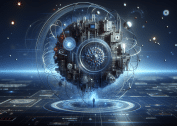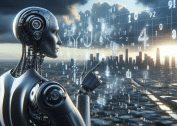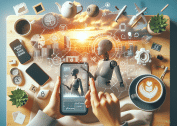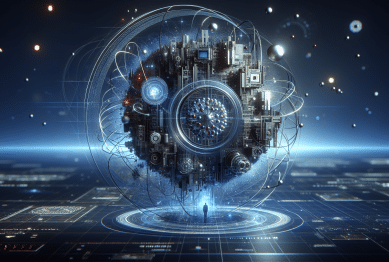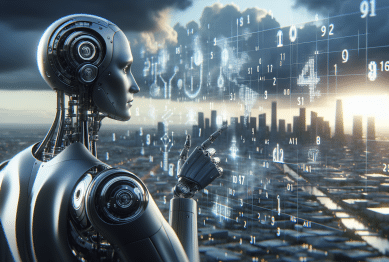Artificial intelligence is already reshaping how people work, learn, and connect. This guide explores the technology behind AI, its emerging applications, what impacts to expect for everyday tasks, and how to navigate the ethical and privacy considerations as AI becomes more integrated in daily routines.
The Rise of AI in Daily Technology
Few technological evolutions have captured worldwide attention like artificial intelligence. From virtual assistants suggesting reminders to navigation systems optimizing routes, AI-driven solutions are quietly blending into daily tech routines. These systems rely on advanced algorithms trained on massive datasets, helping them accurately interpret voices, images, and text. The practical impact reaches far beyond novelty: AI is powering search engines, fraud protection on financial transactions, and content personalization on streaming platforms by learning user preference patterns.
In recent years, machine learning and neural networks have enabled computers to adapt quickly to complex scenarios. Consider how email bots sift through millions of spam messages, or how photo apps identify faces or objects without manual labels. The constant evolution of these models fuels smarter interactions, allowing AI to automate repetitive operations, adjust to new data, and even diagnose system malfunctions within smart homes. The efficiency and speed of these responses reflect the invisible force of AI reshaping convenience.
Tech companies continue to invest heavily in developing AI for everyday use. Smart refrigerators suggest grocery lists, fitness trackers analyze movement for personalized health insights, and voice-operated speakers control entertainment or appliances. As this trend accelerates, the question is not whether one is using AI, but how many daily activities it already touches. Recognizing these subtle integrations allows us to appreciate the quiet revolution AI sparks in homes and workplaces.
Emerging Applications: AI Everywhere
The landscape of artificial intelligence applications expands rapidly. Healthcare leads with AI-enabled diagnostic tools, such as those used in radiology or pathology to identify disease at earlier stages. In education, adaptive learning platforms adjust coursework based on student strengths, making lessons more engaging and efficient. Retail adopts AI chatbots for round-the-clock customer service, while finance deploys predictive analytics to flag suspicious transactions before they cause harm.
Transportation stands on the brink of an automation renaissance. Self-driving vehicles and AI-powered traffic management systems reduce congestion and improve safety for all road users. Urban planners employ predictive models to design smarter cities—monitoring public transportation, minimizing resource waste, and guiding development responsibly. Energy firms use algorithms to forecast demand and optimize delivery, supporting sustainability initiatives worldwide.
Beyond traditional sectors, AI weaves into agriculture, fashion, and even entertainment. Farmers deploy machine vision to monitor crop health, while retailers use style-identification algorithms to recommend products tailored to individual tastes. Streaming platforms rely on user viewing habits to deliver hyper-personalized movie suggestions. AI’s cross-industry reach demonstrates its flexibility and underlines the growing relevance of understanding how these systems shape collective experiences.
AI and Data Privacy Concerns
With artificial intelligence comes a critical conversation about data privacy. AI applications process enormous quantities of user information, often drawn from emails, internet searches, voice recordings, and images. Securing this sensitive material requires robust encryption policies, continuous system updates, and organizational transparency. Regulations like the General Data Protection Regulation (GDPR) have emerged to safeguard individuals, setting clear rules for data collection, sharing, and erasure.
Public trust hinges on how responsibly data is used. Whether AI books a medical appointment, recommends a financial product, or offers personalized news, it must operate with explicit user consent and clear disclosure of information handling practices. Organizations should communicate their data policies, grant users access to their records, and provide easy methods for opting out. Independent oversight—through audits or regulatory bodies—helps to maintain a reasonable balance between innovation and user protection.
Despite advances in regulation, challenges persist. It can be difficult to ensure all AI models erase or anonymize data after use, especially with evolving technical standards. New risks emerge as integrations with wearables and IoT devices become common, leading to unique privacy considerations for everyday activities. Staying informed about security best practices and advocating for transparent corporate conduct helps ensure mutual benefits from technological advances.
Ethics and Bias: Navigating the Complexities
Bias in artificial intelligence poses deep ethical questions, especially as AI decisions increasingly influence healthcare, hiring, law enforcement, and lending. Algorithms can unintentionally perpetuate stereotypes, especially when historical data used to train models reflects societal biases. Ensuring fairness requires ongoing scrutiny, diverse development teams, and regular model updates to identify and address problematic patterns before they have real-world consequences.
Transparency in AI is just as critical. Users and experts alike need insight into how models arrive at certain conclusions, especially in high-stakes decisions. Efforts to create ‘explainable AI’ help stakeholders understand algorithmic logic, assess accountability, and determine whether outcomes are equitable. Open-source initiatives and academic collaborations play a strong role in developing transparent, auditable frameworks for responsible AI deployment.
Ethical AI development also integrates ongoing stakeholder input. This means involving community representatives, ethicists, and legal experts at every stage. Proactive steps—such as bias audits, piloting in controlled environments, and monitoring for unintended impacts—are key for developers to maintain trust and meet societal expectations. As AI expands, embracing clear ethical guardrails strengthens both innovation and public confidence.
The Impact on Jobs and Skills
The relationship between AI and the workforce provokes debate. Automation can streamline repetitive tasks, freeing people to focus on creative, strategic, or interpersonal responsibilities. Yet certain positions—like data entry, logistics, or routine analysis—are susceptible to restructuring due to AI efficiency. Policymakers and business leaders encourage preparation by identifying roles most likely to change and forecasting future labor needs.
At the same time, new career paths are emerging in AI system design, programming, ethics oversight, and data management. Professionals trained in human-AI collaboration, algorithm auditing, and problem-solving remain in high demand. Many universities now offer structured online courses and certifications for gaining relevant skills. Some, like programs from leading research institutions, ensure learners develop both technical fluency and awareness of broader societal impacts. Upskilling and lifelong learning become central themes in career resilience as technology continues to evolve.
While concerns remain about potential displacement, studies suggest that with the right reskilling strategies, AI can be a net positive for employment. The key is proactive adaptation—integrating continuous education, fostering innovation, and supporting those transitioning from disrupted sectors. Those who keep pace with change, embracing ongoing learning, often find new pathways opening in an AI-powered economy.
Future Trends: Where AI Could Lead Next
Speculation grows as researchers push artificial intelligence toward increasingly sophisticated frontiers. Concepts like artificial general intelligence, which could perceive and reason across domains as humans do, remain theoretical but influence investments and research incentives. More practical approaches—such as edge AI for faster local device processing or federated learning that trains models without moving user data—promise to broaden adoption and strengthen privacy control in the near term.
Emerging intersections between AI, robotics, and quantum computing hint at future breakthroughs in healthcare, environmental monitoring, language translation, and materials engineering. Efforts to democratize AI—through open-source platforms, no-code toolkits, and public sector engagement—may foster more equitable access and uncover innovative, community-driven solutions to local challenges. Ongoing collaboration between industry, academia, and policymakers will shape the evolving regulatory and social landscape for AI integration.
As these possibilities unfold, a few principles guide the journey. Responsible governance ensures new technical advances align with societal values. Education, transparency, and adaptability help communities embrace opportunities and manage disruptions. Tracing the trajectory of AI enables individuals and organizations to prepare for what lies ahead with proactive curiosity and balanced optimism.
References
1. European Commission. (n.d.). Ethics guidelines for trustworthy AI. Retrieved from https://digital-strategy.ec.europa.eu/en/library/ethics-guidelines-trustworthy-ai
2. Future of Life Institute. (n.d.). The ethics of artificial intelligence. Retrieved from https://futureoflife.org/background/benefits-risks-of-artificial-intelligence/
3. Information Commissioner’s Office. (n.d.). Artificial intelligence: Guidance on AI and data protection. Retrieved from https://ico.org.uk/for-organisations/guide-to-data-protection/key-dp-themes/guidance-on-ai-and-data-protection/
4. World Economic Forum. (n.d.). Shaping the future of technology governance: Artificial intelligence and machine learning. Retrieved from https://www.weforum.org/platforms/shaping-the-future-of-technology-governance-artificial-intelligence-and-machine-learning
5. Harvard University. (n.d.). How artificial intelligence is changing work. Retrieved from https://www.gse.harvard.edu/news/uk/18/09/how-artificial-intelligence-changing-work
6. United Nations Educational, Scientific and Cultural Organization. (n.d.). Artificial intelligence: Resources and research. Retrieved from https://en.unesco.org/artificial-intelligence



